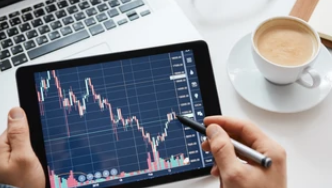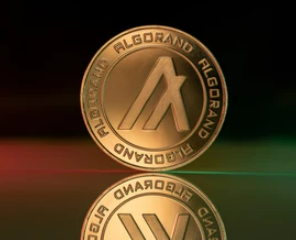
Charlie Brooks
May 09, 2022 17:00

When it comes to offering access to high-level technical indicators, both MT4 and MT5 are excellent choices. But which platform is better suited for your trading objectives?
Both systems can allow the use of automated trading robots and the execution of complex orders. However, which third-party platform is the most appropriate for you?
In this guide, we'll go through a thorough MT4 vs. MT5 comparison so that you can get a better sense of which one is right for you.
MetaTrader is a widely utilized piece of trading software, and it is the preferred platform and is provided by the majority of reliable brokers, including AvaTrade. Let's examine the MetaTrader platform more closely.
Currently, there are two versions of the MetaTrader Platform:
MT4 is accessible via PC, mobile, and the web.
MT5 is accessible via PC, mobile, and the web.
Regardless of which platform you choose, it will not slow down your computer speed. The software is lightweight and will not overburden your systems, allowing for rapid trading and instantaneous execution, both of which are crucial while trading in the fast-paced and occasionally volatile markets.
MetaQuotes Software, the business behind MetaTrader, was created in 2000 when it released its first web-based trading platform, FX Charts. The product was renamed MetaQuotes in 2001, and version 3 was introduced in 2002.
2005 saw the release of MetaTrader 4, which constituted a significant update to the software. MetaQuotes Language 4 (MQL4) supported trading robots and created a mobile version of MetaTrader 4 in the same year.
MetaTrader 4 became the most popular retail trading platform and the flagship product of MetaQuotes Software during the next decade. In 2010, a new version of the platform named MetaTrader 5 was released, although the absence of backward compatibility slowed brokers' adoption of MT5.
Currently, a growing number of brokers are introducing support for MetaTrader 5, which offers significant improvements over its predecessor, MetaTrader 4. The following paragraphs will discuss the most significant distinctions between the two trading platforms.
MetaTrader 4 is a popular trading platform among forex traders and is accessible on mobile and desktop platforms. The MT4 is simple to download and install on Windows, macOS, Android, and iOS devices. Some traders claim to be having difficulty changing their passwords on the platform, but it is actually a simple process. As with any piece of software, it is essential that it is updated to the most recent version.
There are other features accessible on MT4, which we shall investigate more.

On this platform, traders can readily monitor real-time price variations. Additionally, one can analyze price charts over various timeframes, and this makes it reasonably accessible when attempting to determine a trend prior to opening a position to buy or sell.
On the MT4 platform, the following charts can be viewed: Candlestick, Heikin Ashi, and Renko.
Expert Advisors (EAs) can also be used to automate trading on MT4. EAs utilize scripts that are afterward submitted on the platform. EAs will ensure that you are not required to remain in front of your computer around the clock. In addition, it will detect prospective trading opportunities by identifying price trends.
Due to the fact that Metatrader 5 was released in 2010, five years after Metatrader 4, and at a time when Metatrader 4 was already extremely popular, it is not frequently employed. And due to the number sequence in the platform names, there is a frequent misperception that Metatrader 5 is an enhanced version of Metatrader 4, designed to perform the same function more efficiently. Similar to Metatrader 4, it is a trading platform and backtesting machine with comparable graphical user interfaces. This is not the case, however. Any adequate Metatrader evaluation should underline this.
Metatrader 5 was developed to accomplish certain tasks that Metatrader 4 could not. Realistically, it was intended for a different market, so there is little point in discussing "MT4 vs. MT5."
Metatrader 5 was created to trade markets other than Forex, such as stocks and commodities because it is better able to connect to a centralized trading exchange. The foreign exchange (Forex) market is fully decentralized, with a number of large players supplying liquidity into this enormous market at somewhat varying prices. Before ownership may be transferred with full legal force, stocks and commodities, the latter of which is primarily traded as a futures contract (actually numerous contracts with varying expiration dates), must typically be traded through a centralized process. At the time of MT5's creation and release, it may be inferred that Metaquotes anticipated a market in retail trading of stocks and commodities and structured the software accordingly.

The second important design aspect was the compliance with the US "no hedging regulation," which specifies that clients of Forex brokers in the US must deal on a FIFO (first-in, first-out) basis. This means that if a trader purchases one lot of EUR/USD and then purchases a further one lot of EUR/USD, the first deal must be closed prior to the second trade being closed. Metatrader 4 records each trade individually and permits maintenance of each position separately, but Metatrader 5 combines all positions automatically. Consequently, only Metatrader 4 can handle hedging, while Metatrader 5 cannot. This is OK for US traders, as they are prohibited from hedging by law; however, in the majority of the rest of the world, traders find the inability to undertake hedging operations to be an extremely frustrating and unneeded hindrance. It is likely the primary reason why so many traders are irritated by being "pushed" to use Metatrader 5 instead of Metatrader 4 by their brokers and, possibly, by MetaQuotes as well.
Comparing MT4 and MT5, the shift to MT5 may not be as startling due to the similarities between the two platforms. In reality, several of these capabilities are superior or include more possibilities. Thus, you'll find both familiar and novel functions.
The only differences between MT4 and MT5 are the added services and periods on MT5. This is to be expected, given that MT5 permits other trading methods. In addition, the platforms were developed using distinct programming languages: MQL5 for MT5 and MQL4 for MT4.
As discussed earlier, both platforms support Forex trading, but MT5 may link traders to more than just the Forex market as a multi-asset platform.
It also serves as a gateway to worldwide exchange markets, linking investors to the Chicago Mercantile Exchange (CME), Dubai Gold and Commodities Exchange (DGCX), and Moscow Exchange, among others (MOEX).
The three primary types of securities supported by MT5 are bonds, derivatives, and shares.
MT4 supports three order execution kinds, while MT5 supports four. The extra Exchange execution mode transmits trade actions to an external trading system, where they are executed at the current market price.
MT5 contains two additional pending order types, Buy Stop Limit and Sell Stop Limit, in addition to the regular forms seen in MT4. The four standard types of pending orders are executed when a single condition is met, whereas the additional two require the satisfaction of two requirements.
Buy Stop Limit is a combination of Buy Limit and Buy Stop. When the current price reaches X, a Buy Stop order is placed at the stated stop level.
As an illustration of a Sell Stop Limit, when the current price falls to X, a Sell Limit order is placed at the point where an upward pullback occurs.
The hedge accounting system is supported by both MT4 and MT5, although the function was simply added to MT5 as a second accounting system. Initially, MT5 was intended for trading within a net accounting system. The addition of hedging enhanced the possibilities of the platform, allowing traders to:
Possess several positions per financial instrument or symbol, including positions in the opposite direction
Depending on the trading strategy, open one position per financial instrument and then close, alter the volume, or reverse the existing position.
MT5 has 12 additional time frames than MT4, which has nine-time frames. There are seven varieties of hourly charts and eleven varieties of minute charts. Day traders can configure their charts with 2-hour, 8-hour, and 12-hour timeframes.
Both MT4 and MT5 provide a variety of analysis tools that can be used, among other things, to discover cycles and levels of support and resistance, to design channels, and identify price patterns of financial instruments. With MT5, however, the total number of graphical items increases from 33 in MT4 to 44. Among these are Regression Channel, Construction of Waves, and the Buy and Sell indicators.
1024 symbols are the maximum number of tradable financial instruments that MT4 can accommodate, and MT5 eliminates this restriction and allows for an unlimited number. This allows traders to follow additional markets, effectively utilizing the platform's hedging tactics.
Both trading platforms provide traders who rely primarily on technical analysis with essential charting capabilities. MT4 includes 30 built-in technical indicators, whereas MT5 offers eight extra.
In conjunction with the 44 graphical components that can be applied to 21 timeframes, the MT5 platform brings charting to a new level.
Regarding EA (expert advisor) tester and optimization modes, MT4's built-in strategy tester only supports testing a single pair, but MT5's strategy tester supports multiple testing threads that are executed across a network of distant servers. This helps to reduce the execution time.
Expert Advisors (EAs) can be evaluated on various currencies, including more advanced EAs that examine multiple currencies simultaneously and find correlations between currencies.
Real ticks - EA testing and optimization is conducted using real ticks, which imitate real-world conditions as closely as feasible. Real ticks are collected from liquidity providers and exchanges instead of produced ticks, which are based on cached one-minute records.
Both MT4 and MT5 include an integrated email service that sends alerts directly from the trading platforms. The sole difference between the two is that only the latter enables email attachments.
The MT4 platform has a straightforward, user-friendly interface, making it the platform of choice for novice traders. The interface is highly configurable, allowing you to tailor it to your trading requirements.
The MT5 platform is an upgraded version of the MT4 platform, containing enhanced capabilities and additional components. It is a favored alternative to the MT4 platform and is best suited for seasoned forex traders, as it may appear a bit complicated to novices.
The MT4 platform has up to 30 pre-installed trading indicators, 2000 free custom indicators, and 700 premium indicators. The MT5 features 38 built-in indications and the same number of premium and complimentary indicators as the MT4.
MT4 provides users with access to up to nine distinct timeframes, ranging from one minute to one month. In contrast, MT5 offers at least 21 timeframes spanning from one minute to one year, with the ability to receive a more comprehensive market study.
The types of pending orders available on MT4 and MT5 are one of the most noticeable variations between the two platforms.
The MT5 platform's pending order types are among its most advantageous features. They consist of the buy limit, the sell limit, the buy stop, the sell stop, the buy stop limit, and the sell stop limit, two more than the amt4 platform. These pending orders are perfect for traders who are unable to constantly monitor chart movements. The pending orders can be configured to execute trades on the trader's behalf at the specified price level, limiting the number of trades missed while away.
There are just four types of pending orders included with the MT4 platform: buy limit, sell limit, stop, and sell stop. While these are good for novice traders, they can be restrictive for seasoned traders seeking additional trading opportunities.
The MT5 platform has a function for internal fund transfers. With this tool, traders on the MetaTrader platform can move funds across other trading accounts without exiting their trade. This feature is unavailable on the MT4 trading platform.
Regarding account types, the MT4 and MT5 platforms use the hedging system, although the MT5 platform also supports the netting system. On the MT4 platform, you can only trade in the forex market, but the MT5 platform allows you to trade, among other financial products, forex, stocks, and CFDs.
MT4 is programmed with MLQ4. A language often used to construct order-based internet trading platforms. In contrast, the MT5 is programmed with MLQ5, which employs a positioning system. MLQ4 is easier and superior to MLQ5, even though MLQ5 allows traders to develop and modify scripts, making it more efficient than MLQ4.
The MT4 is slower than the MT5, which is to be expected given that the MT5 is an enhanced version of the MT4. MT4 has a 32-bit mono threaded platform, whereas MT5 has a 64-bit mono threaded platform.
MT4 does not provide a market depth support function. However, MT5 includes such a function. This enables MT5 to place bids and offers for different financial instruments at varying prices. This MT5 functionality also displays open buy and sell orders for various securities at varying prices.
Metatrader 5 employs the programming language MQL5 compared to Metatrader 4's MQL4. The intriguing aspect of MQL5 is that it permits "black box" programming, which, in a nutshell, means that it is easier to write and will thus logically provide a better foundation for users and developers of trading robots and other experts advisers. Nonetheless, MetaQuotes extended this functionality to MQL4 in 2014; therefore, there is no longer a difference between the platforms, but it is possible that if the language is upgraded in the future, MetaQuotes will not extend any upgrades to MQL4 as well as MQL5.
It should be noted that there is no compatibility with previous versions, and Metatrader 4 applications cannot run on Metatrader 5. This can be a significant disadvantage for traders trying to "upgrade" and is a fundamental reason why this movement should not be considered an upgrade.

Metatrader 5 does retain two significant programming benefits over Metatrader 4. First, its backtesting functions allow you to test programmed trading strategies and operate at a significantly faster rate, a feature that can save you a great deal of time if you are the type of trader who runs a large number of backtests. It also permits simultaneous backtesting of multiple currency pairs, which can significantly accelerate backtesting procedures.
Which of MetaTrader 4 and MetaTrader 5 should you choose? Initially, the designers believed that the MT5, a more advanced version, would replace the MT4. However, MT5 has the same number of flaws, and the developers have yet to fix them.
The upgrades provided by MT5 were insufficient to convince traders to convert MQL4 indicators and Experts to MQL5. The benefits of MT5 are insufficient to entice traders to switch from their current terminal. Consequently, MT4 remains the finest platform in its category.

May 09, 2022 16:36

May 10, 2022 15:15